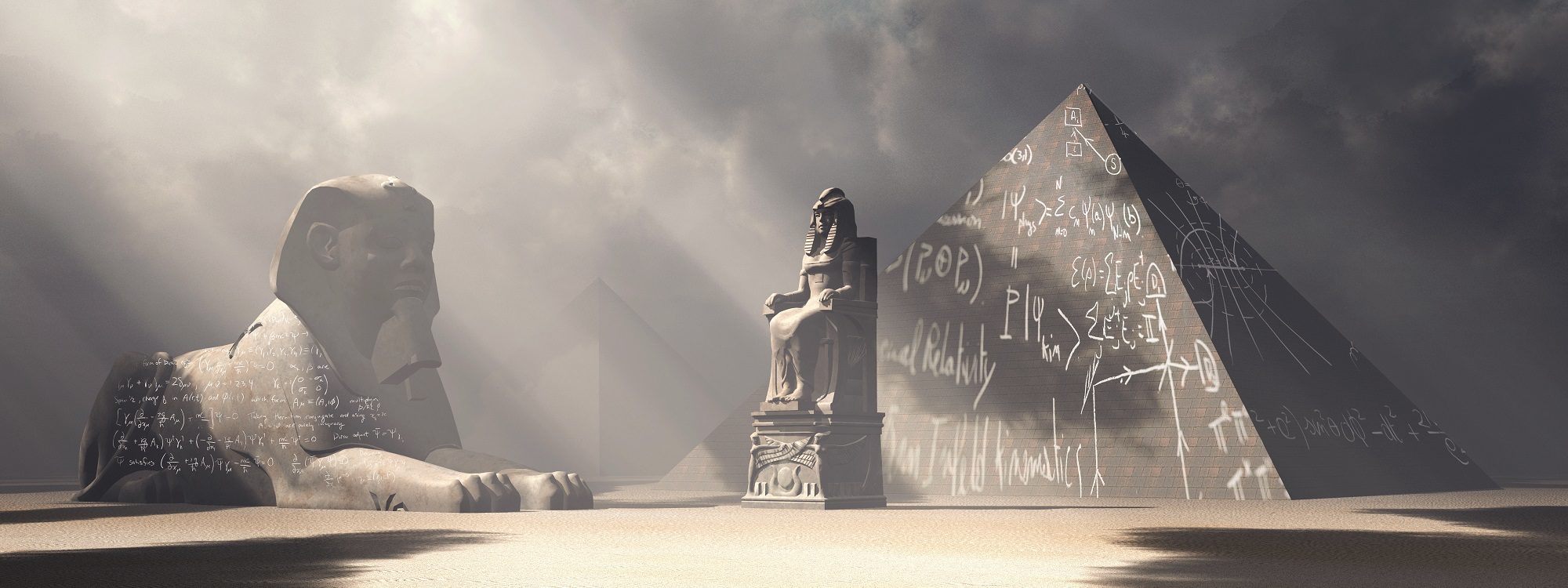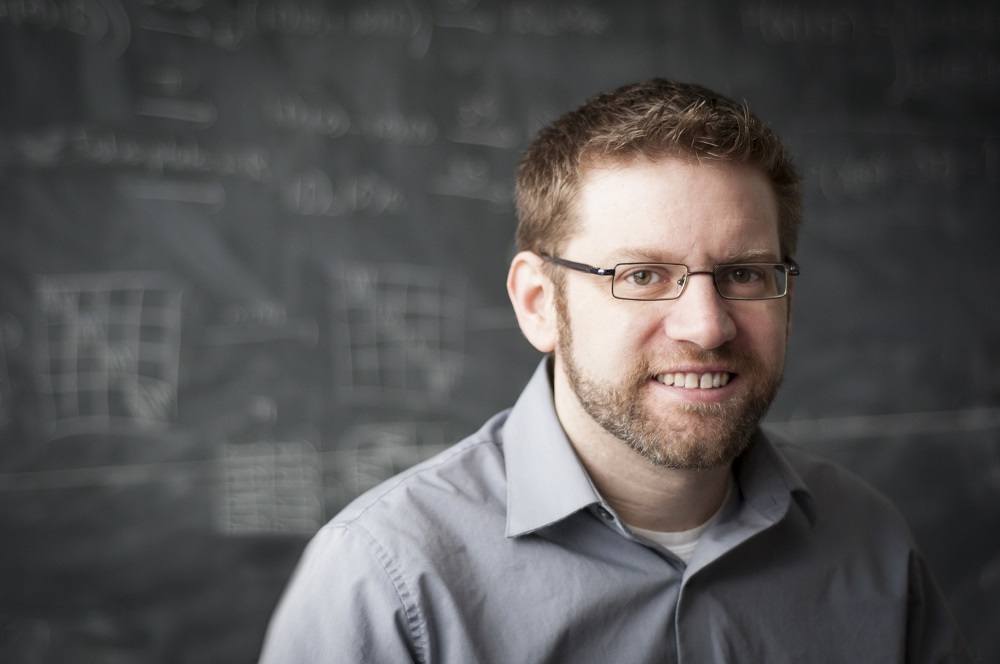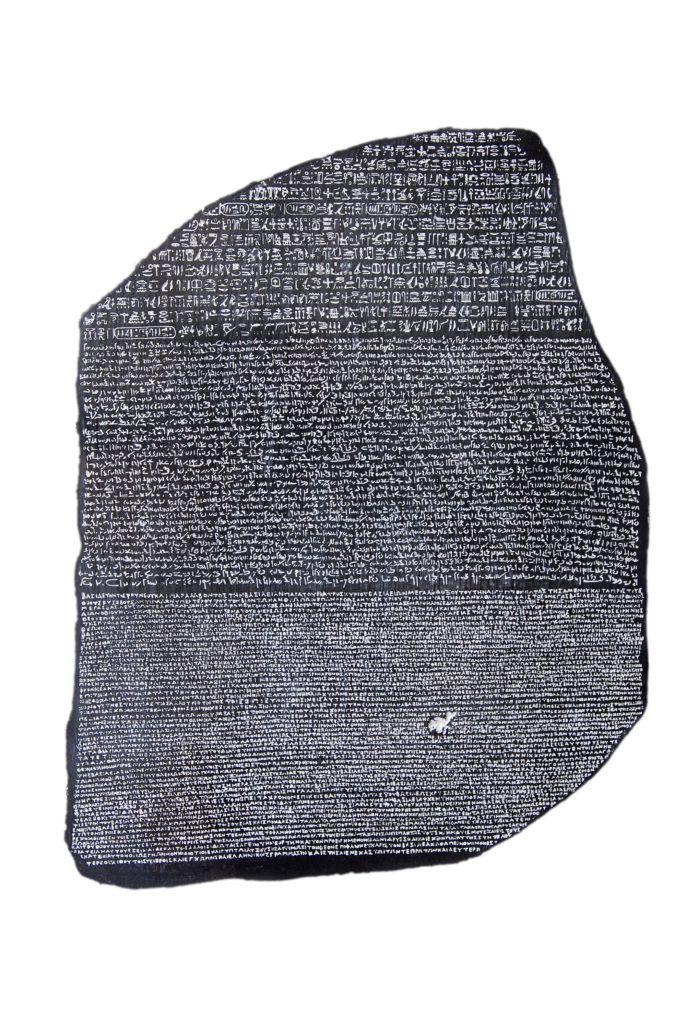What quantum physics can learn from Egyptian hieroglyphs
Is a category mistake at the root of our troubles with quantum theory? Perimeter Faculty member Robert Spekkens explores the “riddle of the Sphinx” and its lessons for quantum science.
Take a self-guided tour from quantum to cosmos!
Is a category mistake at the root of our troubles with quantum theory? Perimeter Faculty member Robert Spekkens explores the “riddle of the Sphinx” and its lessons for quantum science.

A scientific hypothesis is compelling to the extent that it coheres well with other successful hypotheses and with the experimental evidence, as interpreted through the lens of one’s hypotheses. When these are woven tightly together in a mutually supporting web of ideas, they are rarely the subject of controversy.
For quantum theory – the theory which describes all of fundamental physics with the exception of gravity – there is a staggering lack of consensus about its interpretation. There are many proposals for how to do so, but none has achieved sufficient coherence with the rest of physics to persuade a majority of researchers that it is correct. Why not? I believe that it comes down to a category mistake.
To commit a category mistake is to take some entity to be one type of thing when in fact it is another. In the case of quantum theory, most approaches have assumed that its central entity – the quantum state – describes reality. In my view, it actually describes incomplete information about reality.
It would not be the first time that a category mistake was an obstacle to progress in science. My favourite example comes from the story of the decipherment of Egyptian hieroglyphs, a problem that was known as “The Riddle of the Sphinx.”
Egyptian hieroglyphs are one of oldest known writing systems. They emerged prior to 3,000 BC and were used continuously for more than three millennia. The last person in the ancient world who could read and write hieroglyphs likely died sometime in the 5th century AD. For the next 1,300 years, every inscription on every tomb, temple, monument, statue, or vessel that survived from the ancient Egyptian civilization fell silent.
The category mistake that stymied so many scholars’ attempts to decipher hieroglyphs concerned the nature of a glyph. They were assumed to be ideograms representing an idea directly and pictorially, independently of any spoken language, like the symbols on airport signs. In fact, they were phonograms, representing the sounds of a spoken language. In retrospect, all of the attempts at decipherment under the ideographic fallacy, as it is now called, generated only nonsense. No progress could be made until this category mistake was corrected.
In 1799, Napoleon’s army discovered the Rosetta Stone, which contained the same text in three different writing systems: hieroglyphs, demotic, and the Greek alphabetic script. Because scholars knew how to read the Greek text, they were confident that they knew precisely what the hieroglyphs on the Rosetta Stone must be saying. Nonetheless, the question remained of how they managed to say it.
The quantum formalism is similar. Even though we know what it says about the relative probabilities of different measurement outcomes in any given experimental arrangement, the question of how it manages to say this remains. For example, the equations specify the statistical correlations that arise for measurements on a pair of systems that are initially prepared together and then separated, an experiment first suggested by Einstein, Podolsky, and Rosen in 1935. To provide an explanation of these correlations, however, one needs to provide a causal account of how they arise. Is there a causal influence from one wing of the experiment to the other, or is it simply that the pair of systems act as a common cause, with no influence between the wings?

Getting the causal story right is critical if one seeks to extend quantum theory into new domains, such as Einstein’s theory of relativity, where causal structure plays a critical role. More generally, scientific understanding is all about achieving causal explanations, not merely a description of correlations, so it is also critical for achieving coherence between quantum theory and the rest of science.
It turns out that the causal account of this experiment depends critically on the attitude one takes to the quantum state.
On the one hand, if one takes different quantum states to represent different ways the world can be, then because different choices of measurement at one wing of the experiment lead to different quantum states at the other wing, one must grant that there are causal influences from one wing to the other which travel faster than the speed of light. In other words, this interpretation leads to “spooky action at a distance” and tension with relativity theory.
On the other hand, if one takes different quantum states to represent different ways of having incomplete knowledge of the world, then the different choices of measurement at one wing can correspond simply to different ways of updating one’s knowledge of the physical state at the opposite wing. This is because the physical states at the two wings are both determined by a common cause, so that learning about one implies updating one’s information about the other. No spooky actions are required in this case.
We now know that there are certain fragments of quantum theory – containing only a subset of the full set of quantum states and measurements – which admit of an interpretation where every quantum state can be understood as a mathematical encoding of a probability distribution over a set of deeper physical states. These are called Clifford fragments.
For quantum phenomena appearing in these fragments, the account of them that one obtains in this way is both compelling and coherent with the rest of physics – for instance, by not requiring any faster-than-light causal influences. Moreover, the Clifford fragments contain most of the phenomena that are thought to be characteristically quantum: entangled states, the collapse of the wave function, interference phenomena, quantum teleportation, the impossibility of cloning quantum states, wave-particle duality, and many others. Is there any hope of pulling off this sort of explanation beyond the Clifford fragments? Not if we insist that incomplete knowledge of reality must be represented by a probability distribution.
This is what is shown by a famous 1964 “no-go” theorem due to John Bell. However, we need not insist on this. Perhaps the complex-valued matrices appearing in the quantum formalism provide a novel way of representing incomplete information about reality.
This idea is currently being pursued, and it is already apparent that even for the sorts of experiments considered in Bell’s theorem, one can secure an explanation of the correlations in terms of a common cause. But it is not yet apparent how to make the approach work for every conceivable experimental arrangement. It is still a research program.
Nonetheless, the nature of the evidence against quantum states representing reality, at this moment in time, bears a strong analogy to the nature of the evidence against the ideographic interpretation of hieroglyphs just prior to their decipherment.
The hero of the decipherment story is a Frenchman by the name of Jean-François Champollion. Already fascinated by Egyptology as a youth, he went on to study languages, and, in 1808, acquired a high-quality copy of the Rosetta Stone inscription. Early on, he deduced that the demotic text on the stone was just a cursive form of the hieroglyphic text. Parts of the demotic text had been previously recognized to phonetically encode the sounds of foreign names appearing in the Greek text, such as the Greek Macedonian name of Ptolemy, so Champollion reasoned that this would be true of the hieroglyphs as well.

He focused on strings of glyphs that were encircled by ovals – dubbed “cartouches” by Napoleon’s soldiers because of the similarity to the shape of their bullet casings. Counting the number of signs appearing there, he became convinced that the cartouches contained the name of Ptolemy rendered phonetically. He then found confirming evidence for the phonetic values he had obtained, in a cartouche containing the name of Cleopatra in a different hieroglyphic inscription that had an accompanying Greek text. He found yet more evidence for his values by identifying the names of other Pharaohs in the cartouches of other hieroglyphic texts.
Incredibly, this progress did not lead Champollion to overcome the ideographic fallacy. Instead, he reasoned that it was only in the exceptional circumstance of writing proper names that they were to be interpreted phonetically.
In the early 1820s, Champollion was still working feverishly on the problem. He was not sleeping much and hardly eating. The solution continued to elude him until, on a fateful day in 1822, he decided to focus on the glyphs outside the cartouches and see what would happen if he attempted to read these phonetically as well.
Bear in mind that it was not known what language was spoken by the ancient Egyptians, and if nothing of it had survived, then a phonetic reading would have been impossible. But something had survived. The language of the Egyptians had continued to be used in the liturgical tradition of the Coptic Christian Church, even after Arabic became the everyday spoken language of Egyptians following the Arab conquest of Egypt in 642 AD. As it happened, Champollion had studied the Coptic language. So when he attempted a phonetic reading of the glyphs in the rest of the Rosetta Stone, he began to recognize the verbs, nouns, pronouns, and grammatical forms of Coptic. That was his Eureka moment. He sprinted across town, burst into his brother’s office, shouted “Je tiens l’affaire!” (I have it!), then collapsed out of exhaustion.
Champollion’s phonetic reading of hieroglyphs has stood the test of time because it has the kind of coherence with other evidence that makes it nearly impossible to dispute: the meaning of the hieroglyphic script on the Rosetta Stone is found to match that of the Greek text, and similarly for other scripts that have Greek counterparts; the contents of hieroglyphic inscriptions fit with their archaeological and historical context; and the notion that Coptic is a descendent of the language of the ancient Egyptians fits both linguistic and historical evidence.
For the Clifford fragments of quantum theory, the interpretation of quantum states that coheres best with the rest of physics is the one that interprets them as states of knowledge rather than states of reality. This parallels the discovery that the glyphs within the cartouches are phonograms rather than ideograms.
For the totality of quantum theory, there is good reason to believe that quantum states can still be interpreted as states of incomplete knowledge. Such knowledge is not represented by probability distributions, but a more exotic formalism, the precise form of which is not yet clear.
This parallels the fact that, unlike proper names that are pronounced similarly in many different languages, a phonetic reading of the glyphs outside of the cartouches required Champollion to identify the specific language spoken by the Egyptian scribes. For proponents of the research program described above, unearthing the novel formal language for expressing incomplete information of reality – our Eureka moment – is still to come.
There are many other problems in physics for which the proposed solutions are not yet compelling because they are not yet embedded in a web of mutually supporting relationships with the rest of physics. For these, the story of the decipherment of hieroglyphs should prompt us to reflect more deeply about our presuppositions: could they contain a category mistake?
Based on Robert Spekkens’ Perimeter Public Lecture on February 7, 2018. Watch it below or click here.
M. Zender, “Writing and Civilization: From Ancient Worlds to Modernity,” The Great Courses (2013).
R.W. Spekkens, “Quasi-quantization: classical statistical theories with an epistemic restriction,” in Quantum Theory:
Informational foundations and foils, eds. G. Chiribella and R. W. Spekkens, Springer (2016).
M.S. Leifer and R.W. Spekkens, “Towards a formulation of quantum theory as a causally neutral theory of Bayesian inference,”
Phys. Rev. A 88, 052130 (2013).
A round-up of what’s up: the latest news from Perimeter, a look at the recent work of researchers and alumni, gems from the archive, and fun physics for everyone.
Elie Wolfe’s hidden variables research is deeply counterintuitive – and may shed light on what quantum theory tells us about the world.
Recent insights into the quantum realm open a door to new technological advances.